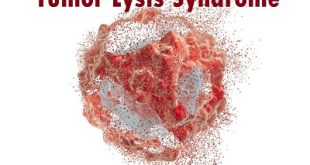Definition
Tetanus is an acute, often-fatal disease of the nervous system that is caused by nerve toxins produced by the bacterium Clostridium tetani. This bacterium is found throughout the world in the soil and in animal and human intestines. The bacterium can also lay dormant in its spore form for years before becoming activated and developing into a regularly reproducing bacterium.
Tetanus
History
Tetanus was well known to ancient people who recognized the relationship between wounds and fatal muscle spasms. In 1884, Arthur Nicolaier isolated the strychnine-like toxin of tetanus from free-living, anaerobic soil bacteria. The etiology of the disease was further elucidated in 1884 by Antonio Carle and Giorgio Rattone, two pathologists of the University of Turin, who demonstrated the transmissibility of Clostridium tetani for the first time. They produced it in rabbits by injecting pus from a patient with fatal tetanus into their sciatic nerves.
In 1891, C. tetani was isolated from a human victim by Kitasato Shibasaburō, who later showed that the organism could produce disease when injected into animals, and that the toxin could be neutralized by specific antibodies. In 1897, Edmond Nocard showed that tetanus antitoxin induced passive immunity in humans, and could be used for prophylaxis and treatment. Tetanus toxoid vaccine was developed by P. Descombey in 1924, and was widely used to prevent tetanus induced by battle wounds during World War II.
Epidemiology
In 2013 it caused about 59,000 deaths down from 356,000 in 1990. Tetanus in particular, the neonatal form remains a significant public health problem in non-industrialized countries with 59,000 newborns worldwide dying in 2008 as a result of neonatal tetanus. In the United States, from 2000 through 2007 an average of 31 cases were reported per year. Nearly all of the cases in the United States occur in unimmunized individuals or individuals who have allowed their inoculations to lapse.
Types
Generalized Tetanus – It is the most common form which making up about 80% of all cases. It usually presents with a descending pattern starting from the jaw area and facial spasms down to the neck and then the chest muscles.
Neonatal Tetanus – This occurs in newly born children, which is usually caused by an infection of the umbilical stump. The incubation period is only about 4 days, but immunization of the mother gives her child what is called passive immunity.
Local Tetanus – In this type, contractions and spasms are only limited to the site of injury. It usually lasts for a few weeks, then subsides to a milder and less threatening form of tetanus. Proper treatment is required in order to avoid its development into generalized tetanus.
Cephalic Tetanus – This is the rarest type and in some cases occurs alongside an ear infection.
Risk factors of Tetanus
The following increase your likelihood of getting it:
- Failure to get vaccinated or to keep up to date with booster shots
- An injury that lets tetanus spores into the wound
- A foreign body, such as a nail or splinter
It has developed from the following:
- Puncture wounds including from splinters, body piercings, tattoos, injection drugs
- Gunshot wounds
- Compound fractures
- Burns
- Surgical wounds
- Injection drug use
- Animal or insect bites
- Infected foot ulcers
- Dental infections
- Infected umbilical stumps in newborns born of inadequately immunized mothers
Causes
- Tetanus is caused by the Clostridium tetani spores are able to survive for a long time outside of the body. They are most commonly found in animal manure and contaminated soil, but may exist virtually anywhere.
- When Clostridium tetani enter the body, they multiply rapidly and release tetanospasmin, a neurotoxin. When tetanospasmin enters the bloodstream, it rapidly spreads around the body, causing its symptoms.
- Tetanospasmin interferes with the signals traveling from the brain to the nerves in the spinal cord, and then on to the muscles, causing muscle spasms and stiffness.
- Puncture wounds – Clostridium tetani enters the body mainly through skin lesions (skin cut or puncture wound). Thoroughly cleaning any cut helps prevent an infection from developing.
Symptoms of Tetanus
Symptoms include:
- Jaw cramping
- Sudden, involuntary muscle tightening (muscle spasms) often in the stomach
- Painful muscle stiffness all over the body
- Trouble swallowing
- Jerking or staring (seizures)
- Headache
- Fever and sweating
- Changes in blood pressure and a fast heart rate
Complications
Once tetanus toxin has bonded to your nerve endings it is impossible to remove. Complete recovery from this infection requires new nerve endings to grow, which can take up to several months.
Complications may include:
Broken bones: The severity of spasms may cause the spine and other bones to break.
Blockage of a lung artery (pulmonary embolism): A blood clot that has traveled from elsewhere in your body can block the main artery of the lung or one of its branches.
Death: Severe tetanus-induced (tetanic) muscle spasms can interfere with or stop your breathing. Respiratory failure is the most common cause of death. Lack of oxygen may also induce cardiac arrest and death. Pneumonia is another cause of death.
Diagnosis of Tetanus
Doctors diagnosis is based on a physical exam, medical and immunization history, and the signs and symptoms of muscle spasms, stiffness and pain. Laboratory tests generally aren’t helpful for diagnosing the infection of Clostridium tetani.
Treatment and medications
Since there’s no cure for this disease, treatment consists of wound care, medications to ease symptoms and supportive care.
Wound care
Cleaning the wound is essential to preventing growth of spores. This involves removing dirt, foreign objects and dead tissue from the wound.
Medications
Antitoxin: Your doctor may give you a tetanus antitoxin, such as tetanus immune globulin. However, the antitoxin can neutralize only toxin that hasn’t yet bonded to nerve tissue.
Antibiotics: Your doctor may also give you antibiotics, either orally or by injection, to fight tetanus bacteria.
Vaccine: All people infected with Clostridium tetani should receive the tetanus vaccine as soon as they’re diagnosed with the condition.
Sedatives: Doctors generally use powerful sedatives to control muscle spasms.
Other drugs: Other medications, such as magnesium sulfate and certain beta blockers, might be used to regulate involuntary muscle activity, such as your heartbeat and breathing. Morphine might be used for this purpose as well as sedation.
Supportive therapies
Severe infection of Clostridium tetani often requires a long stay in an intensive care setting. Since sedatives can inhibit breathing, you might temporarily need a ventilator.
Prevention of Tetanus
- Exclusion of people with tetanus from childcare, preschool, school and work is not necessary.
- Protection is provided by a tetanus-containing vaccine which is given in combination with other vaccines as part of routine childhood immunisation. The first dose of tetanus vaccine, in combination with other vaccines, is now recommended to be given at 6 weeks of age. A tetanus booster is recommended at 3½ years of age and between 12 and 15 years of age. A booster is also recommended at age 50 years and prior to travelling overseas, if one has not been given in the previous 10 years.
- For adolescents and adults, the combined diphtheria-tetanus-pertussis (dTpa) vaccine is preferred, if not given previously, as it will also provide protection against whooping cough (pertussis).
- Boosters every 10 years are no longer recommended.
 Diseases Treatments Dictionary This is complete solution to read all diseases treatments Which covers Prevention, Causes, Symptoms, Medical Terms, Drugs, Prescription, Natural Remedies with cures and Treatments. Most of the common diseases were listed in names, split with categories.
Diseases Treatments Dictionary This is complete solution to read all diseases treatments Which covers Prevention, Causes, Symptoms, Medical Terms, Drugs, Prescription, Natural Remedies with cures and Treatments. Most of the common diseases were listed in names, split with categories.








pls Dr., when does a pregnant woman take tetanus injection and how many times
Tetanus injection is recommended during pregnancy, preferably between 27 and 36 week’s gestation, to protect baby from whooping cough. If not administered during pregnancy, tetanus should be administered immediately after the birth of your baby.
if the woman has not previously been vaccinated, or if her immunization status is unknown,
give two doses of TT one month apart before delivery, if the woman has had 1–4 doses of tetanus toxoid in the past, give one dose of TT before delivery ( a total of five doses protect the child bearing years).
very nice app
I like this app
It is really helping me
Thank u d developer
its really valuable app….it help me a lot..very interesting information is here…thanks developer..
Dear Dr,what should be the time period between brute and vaccination,up to what period it will effective,please let me know.
It will be effective for 10 years.
Dr. if I am suffering with blood pressure how can I going to treat it ?
Consult a doctor to get treat with blood pressure.
I love this app. very useful. Doctor, please, any time I have sex with my wife, my sperm I ejaculate into her always flow out and stains my bed. What is the cause, and what treatment can she undergo to overcome it. It is really given her sleepless nights. please, urgent response through my email address provided.
Please consult a doctor.
this topic helped me in my exams and well summerized ,I can clearly understand the concept without getting confusion. thank you for this lecture ?